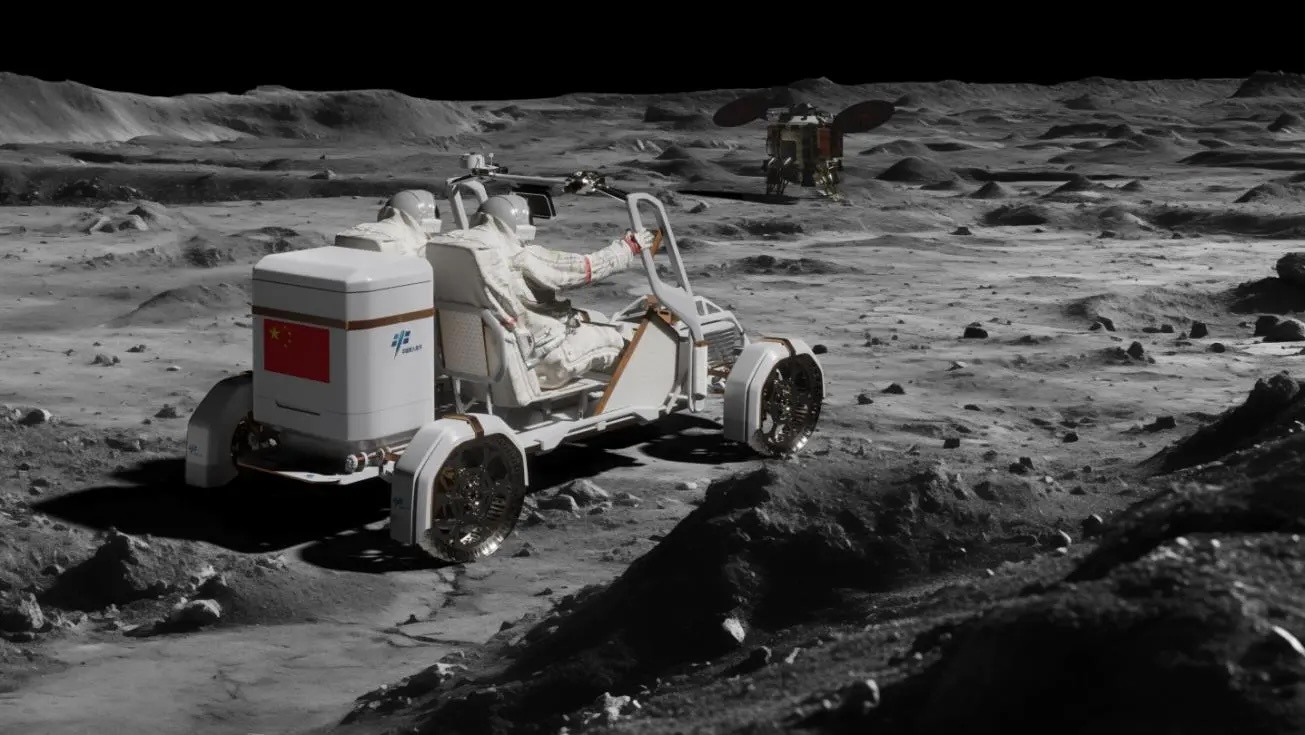31.10.2024

Artwork depicting one of two rover designs selected by CMSEO for prototype development. Credit: CMSEO
HELSINKI — China’s human spaceflight agency has selected two teams to develop prototype rovers for the country’s planned crewed moon mission before the end of the decade.
The country last year put out a call for designs for a rover that will seat two astronauts for a short-duration lunar crewed mission which China aims to conduct before 2030.
Teams from the China Academy of Space Technology (CAST) and the Shanghai Academy of Spaceflight Technology (SAST), both groups under the China Aerospace Science and Technology Corporation (CASC), the country’s state-owned main space contractor, have been selected to develop prototypes, the China Manned Space Engineering Office (CMSEO) announced Oct. 29.
“Each team showcased unique characteristics in innovation and advancement,” Lin Xiqiang, CMSEO spokesperson, said during a Shenzhou-19 prelaunch press conference at Jiuquan spaceport, Oct. 29. “Both have won the contract for the prototype development of the lunar rover, and are progressing with their respective projects.”
The rover will have a mass of 200 kilograms and have a range of 10 kilometers, according to the 2023 call for proposals. Lin said that there will be a call for suggestions for naming the rover.
China has already initiated a plan to land a pair of its astronauts on the moon by 2030. The mission will use a pair of in-development Long March 10 rockets to separately launch a crew spacecraft, named Mengzhou, crewed by three astronauts, and a landing stack, with the lander named Lanyue.
A pair of astronauts will descend to the lunar surface for a roughly six-hour stay on the moon. CMSEO unveiled the exterior design of its lunar extravehicular activity suit late last month.
Progress on the various aspects of the mission is developing as planned, Lin stated.
“So far, the prototype production and ground tests of the Long March 10 rocket, the spacecraft Mengzhou, the lunar lander Lanyue, the moon landing spacesuits and crewed lunar rover are underway as planned,” Lin said.
“We have completed various large-scale tests, including the integrated airdrop test for the spacecraft, the separation test of the two capsules of the lander, the test firing of the three-engine power system for the rocket’s first stage, and the high-altitude simulation test for the YF-75Ehydrogen-oxygen engine. A number of ground facilities and equipment have been built and put into use to ensure the production and tests mentioned above,” said Lin.
Lin also stated that China’s fourth batch of astronauts, selected in June, will perform both space station missions and crewed lunar missions. “The training will focus on basic living, working and health maintenance skills in a weightless environment, special skills for extravehicular activities, equipment maintenance and repair, and space science experiments,” Lin said.
“We have basically wrapped up the overall planning for pre-launch flight test, as well as the scientific research objectives and the payloads for the first crewed lunar mission,” Lin added. “The ground systems, including the launching site, the telemetry and control communications, and the landing site, are under development and construction as planned.”
Alongside the crew plans, China aims to construct a moon base known as the International Lunar Research Station (ILRS).
NASA aims to return astronauts to the moon with the Artemis 3 mission, currently scheduled for September 2026. However, the agency’s own analysis estimates a nearly one-in-three chance the lander will be at least a year and a half late.
The agency is also backing development of a Lunar Terrain Vehicle (LTV) to develop rovers that would be used by astronauts on Artemis missions starting with Artemis 5 at the end of the decade.
Meanwhile, China will launch its Shenzhou-19 mission to the Tiangong space station for Oct. 29. Launch is scheduled for 4:27 p.m. Eastern (2027 UTC) from Jiuquan.
Quelle: SN
